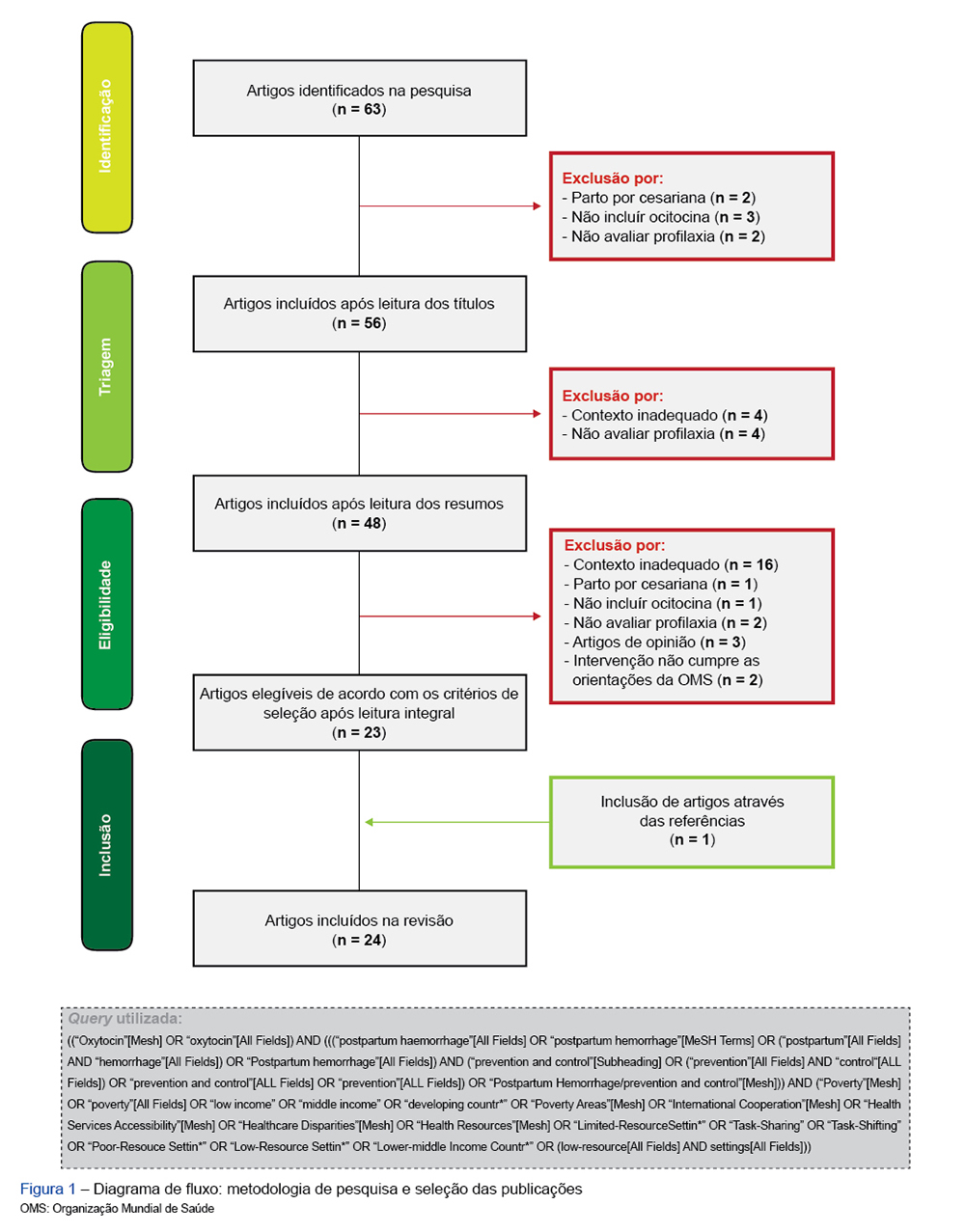SOCIAL MEDIA
Portuguese Medical Association's Scientific Journal

Introduction: Postpartum hemorrhage remains one of the leading causes of maternal death globally. Oxytocin is the uterotonic agent of choice for the prophylaxis of this complication. However, its use in low-resource settings is associated with clinical, political, economic and cultural constraints. The goal of this article is to describe the use of oxytocin for postpartum hemorrhage prophylaxis in low-resource settings.
Material and Methods: A literature review on the topic was carried out, and 24 articles were included.
Results: The information was organized into seven sections: the evaluation of the efficacy of oxytocin compared to other uterotonics, the use of oxytocin in home births, the training of healthcare professionals, the quality of the available oxytocin, the new formulations, the risks associated with the use of uterotonic and the adopted health policies.
Discussion: Despite the progress achieved widespread access to oxytocin for postpartum hemorrhage prophylaxis in low-resource settings is less than desirable. The main difficulties encountered were the shortage of skilled healthcare professionals for oxytocin administration, deficiencies concerning the quality of the drug and the inadequacy of available clinical guidelines.
Conclusion: In order to reduce maternal mortality caused by postpartum hemorrhage in low-resource settings, it is essential to improve the knowledge of healthcare professionals, to implement good practices on the use of uterotonics, to optimize resource management and to overcome cultural barriers that prevent the demand for health services.